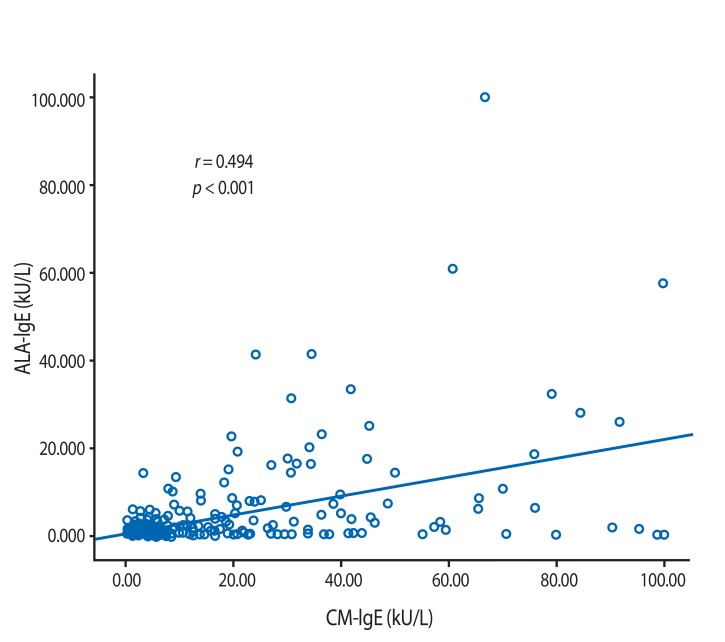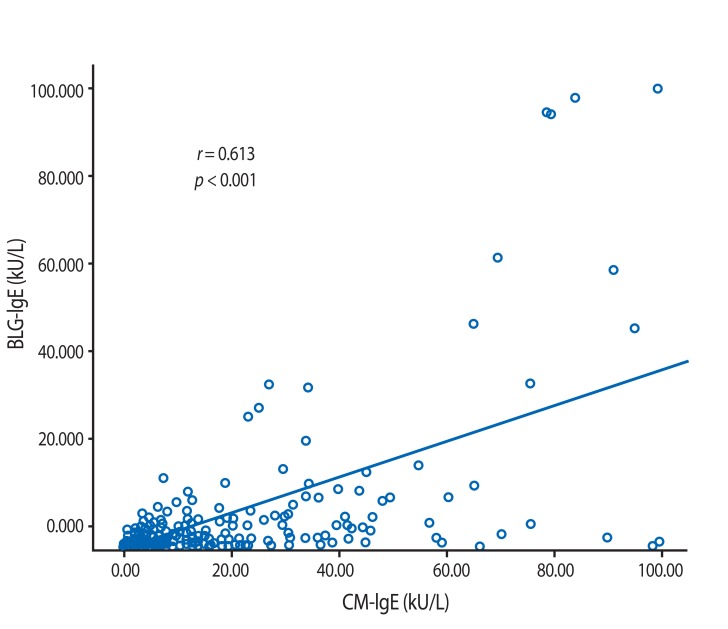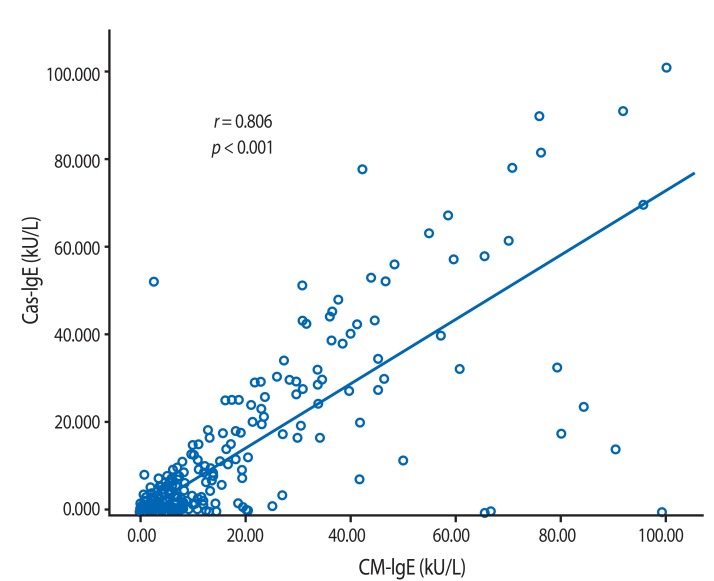1. Rona RJ, Keil T, Summers C, Gislason D, Zuidmeer L, Sodergren E, Sigurdardottir ST, Lindner T, Goldhahn K, Dahlstrom J, McBride D, Madsen C. The prevalence of food allergy: a meta-analysis. J Allergy Clin Immunol. 2007; 120:638–646. PMID:
17628647.

2. Bock SA, Sampson HA. Evaluation of food allergy. In : Leung DY, Sampson HA, Geha R, Szefler SJ, editors. Pediatric allergy: principles and practice. 2nd ed. Philadelphia (PA): Saunders;2010. p. 477–486.
3. Oh JW, Pyun BY, Choung JT, Ahn KM, Kim CH, Song SW, Son JA, Lee SY, Lee SI. Epidemiological change of atopic dermatitis and food allergy in school-aged children in Korea between 1995 and 2000. J Korean Med Sci. 2004; 19:716–723. PMID:
15483350.

4. Bock SA. Prospective appraisal of complaints of adverse reactions to foods in children during the first 3 years of life. Pediatrics. 1987; 79:683–688. PMID:
3575022.

5. Høst A, Halken S. A prospective study of cow milk allergy in Danish infants during the first 3 years of life. Clinical course in relation to clinical and immunological type of hypersensitivity reaction. Allergy. 1990; 45:587–596. PMID:
2288394.
6. Järvinen KM, Beyer K, Vila L, Chatchatee P, Busse PJ, Sampson HA. B-cell epitopes as a screening instrument for persistent cow's milk allergy. J Allergy Clin Immunol. 2002; 110:293–297. PMID:
12170271.

7. Wal JM. Cow's milk allergens. Allergy. 1998; 53:1013–1022. PMID:
9860234.

8. Sicherer SH, Sampson HA. Cow's milk protein-specific IgE concentrations in two age groups of milk-allergic children and in children achieving clinical tolerance. Clin Exp Allergy. 1999; 29:507–512. PMID:
10202365.

9. Hill DJ, Firer MA, Ball G, Hosking CS. Natural history of cows' milk allergy in children: immunological outcome over 2 years. Clin Exp Allergy. 1993; 23:124–131. PMID:
8448679.

10. Docena GH, Fernandez R, Chirdo FG, Fossati CA. Identification of casein as the major allergenic and antigenic protein of cow's milk. Allergy. 1996; 51:412–416. PMID:
8837665.

11. Tabar AI, Alvarez MJ, Echechipía S, Acero S, Garcia BE, Olaguíbel JM. Anaphylaxis from cow's milk casein. Allergy. 1996; 51:343–345. PMID:
8836341.

12. Shin MY, Han YS, Park HY, Ahn YH, Chung EH, Ahn KM, Lee SI. Cow's milk protein-specific IgE concentrations in two age groups of children with cow's milk allergy. Pediatr Allergy Respir Dis. 2004; 14:207–214.
13. Chatchatee P, Järvinen KM, Bardina L, Beyer K, Sampson HA. Identification of IgE- and IgG-binding epitopes on alpha(s1)-casein: differences in patients with persistent and transient cow's milk allergy. J Allergy Clin Immunol. 2001; 107:379–383. PMID:
11174208.
14. Wang J, Lin J, Bardina L, Goldis M, Nowak-Wegrzyn A, Shreffler WG, Sampson HA. Correlation of IgE/IgG4 milk epitopes and affinity of milk-specific IgE antibodies with different phenotypes of clinical milk allergy. J Allergy Clin Immunol. 2010; 125:695–702. PMID:
20226304.

15. Sampson HA. Utility of food-specific IgE concentrations in predicting symptomatic food allergy. J Allergy Clin Immunol. 2001; 107:891–896. PMID:
11344358.

16. García-Ara C, Boyano-Martínez T, Díaz-Pena JM, Martín-Muñoz F, Reche-Frutos M, Martín-Esteban M. Specific IgE levels in the diagnosis of immediate hypersensitivity to cows' milk protein in the infant. J Allergy Clin Immunol. 2001; 107:185–190. PMID:
11150010.

17. Hanifin JM, Rajka G. Diagnostic features of atopic dermatitis. Acta Derm Venereol Suppl (Stockh). 1980; 59:44–47.
18. Burks AW, Mallory SB, Williams LW, Shirrell MA. Atopic dermatitis: clinical relevance of food hypersensitivity reactions. J Pediatr. 1988; 113:447–451. PMID:
3411388.

19. Sampson HA, Metcalfe DD. Food allergies. JAMA. 1992; 268:2840–2844. PMID:
1433699.

20. Eigenmann PA, Sicherer SH, Borkowski TA, Cohen BA, Sampson HA. Prevalence of IgE-mediated food allergy among children with atopic dermatitis. Pediatrics. 1998; 101:E8. PMID:
9481027.

21. Byrne AM, Malka-Rais J, Burks AW, Fleischer DM. How do we know when peanut and tree nut allergy have resolved, and how do we keep it resolved? Clin Exp Allergy. 2010; 40:1303–1311. PMID:
20645999.

22. Fleischer DM, Conover-Walker MK, Christie L, Burks AW, Wood RA. The natural progression of peanut allergy: resolution and the possibility of recurrence. J Allergy Clin Immunol. 2003; 112:183–189. PMID:
12847497.

23. Sampson HA. Food allergy--accurately identifying clinical reactivity. Allergy. 2005; 60(Suppl 79):19–24. PMID:
15842229.
24. Boyano-Martínez T, García-Ara C, Pedrosa M, Díaz-Pena JM, Quirce S. Accidental allergic reactions in children allergic to cow's milk proteins. J Allergy Clin Immunol. 2009; 123:883–888. PMID:
19232704.

25. Gern JE, Yang E, Evrard HM, Sampson HA. Allergic reactions to milkcontaminated "nondairy" products. N Engl J Med. 1991; 324:976–979. PMID:
2002820.

26. Vereda A, van Hage M, Ahlstedt S, Ibañez MD, Cuesta-Herranz J, van Odijk J, Wickman M, Sampson HA. Peanut allergy: clinical and immunologic differences among patients from 3 different geographic regions. J Allergy Clin Immunol. 2011; 127:603–607. PMID:
21093026.

27. Kramer MS. Breastfeeding and allergy: the evidence. Ann Nutr Metab. 2011; 59:20–26. PMID:
22189253.

28. Boyce JA, Assa'a A, Burks AW, Jones SM, Sampson HA, Wood RA, Plaut M, Cooper SF, Fenton MJ, Arshad SH, Bahna SL, Beck LA, Byrd-Bredbenner C, Camargo CA Jr, Eichenfield L, Furuta GT, Hanifin JM, Jones C, Kraft M, Levy BD, Lieberman P, Luccioli S, McCall KM, Schneider LC, Simon RA, Simons FE, Teach SJ, Yawn BP, Schwaninger JM. NIAID-sponsored Expert Panel. Guidelines for the diagnosis and management of food allergy in the United States: summary of the NIAID-Sponsored Expert Panel Report. Nutrition. 2011; 27:253–267. PMID:
21215925.







 PDF
PDF ePub
ePub Citation
Citation Print
Print







 XML Download
XML Download